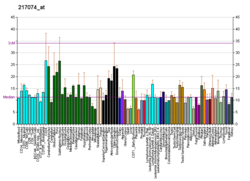| SMOX | |||||||||||||||||||||||||||||||||||||||||||||||||||
|---|---|---|---|---|---|---|---|---|---|---|---|---|---|---|---|---|---|---|---|---|---|---|---|---|---|---|---|---|---|---|---|---|---|---|---|---|---|---|---|---|---|---|---|---|---|---|---|---|---|---|---|
| Identifiers | |||||||||||||||||||||||||||||||||||||||||||||||||||
| Aliases | SMOX , C20orf16, PAO, PAO-1, PAO1, PAOH, PAOH1, SMO, spermine oxidase | ||||||||||||||||||||||||||||||||||||||||||||||||||
| External IDs | OMIM: 615854; MGI: 2445356; HomoloGene: 69268; GeneCards: SMOX; OMA:SMOX - orthologs | ||||||||||||||||||||||||||||||||||||||||||||||||||
| EC number | 1.5.3.16 | ||||||||||||||||||||||||||||||||||||||||||||||||||
| |||||||||||||||||||||||||||||||||||||||||||||||||||
| |||||||||||||||||||||||||||||||||||||||||||||||||||
| |||||||||||||||||||||||||||||||||||||||||||||||||||
| |||||||||||||||||||||||||||||||||||||||||||||||||||
| |||||||||||||||||||||||||||||||||||||||||||||||||||
| Wikidata | |||||||||||||||||||||||||||||||||||||||||||||||||||
| |||||||||||||||||||||||||||||||||||||||||||||||||||
Spermine oxidase is an enzyme that in humans is encoded by the SMOX gene. [5] [6] [7]





